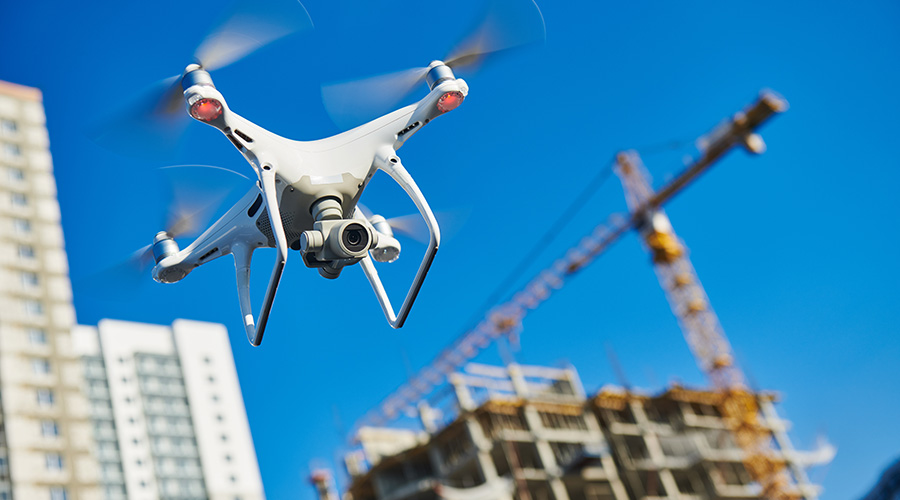Cutting-Edge Computers
Wireless technology paves the way to higher productivity
for the University of Miami’s physical plant department
Michael White does not shy away from change. In fact, continuous change has become nearly normal during his 12 years at the University of Miami in Coral Cables, Fla., where he is director of the physical plant. So when talk turned to how the university’s physical plant could further improve productivity, White and his boss, Victor Atherton, vice president for facilities, studied the changes they could make in the university’s maintenance operation.
Looking at what might seem like a giant leap, they imagined the future of maintenance. They imagined staff who had access to work orders, blueprints and part numbers at a job site. They imagined workers coming to work and heading right to a job site, confident they had everything to get their jobs done. And they imagined managers who could monitor work in progress from a seat in front of a computer.
When they imagined these scenes, they saw a new computerized maintenance management system (CMMS) that could be accessed using wireless, handheld computers with no downloading. With the tap of a key, a worker would know about his or her jobs for the day, as well as the needed tools and materials.
And with a mobile link to the Internet, a worker also could access reams of information including equipment work histories, warranty information, and step-by-step instructions in real time from manufacturers. White and Atherton believed this system could save time and improve service. It will be the future, they say, at least for Miami.
White expects to implement the wireless CMMS this summer, starting with one of the department’s work zones and, based on that experience, begin distributing it to the other three zones soon after.
“This system won’t be bleeding-edge technology, but it’s out there,” Atherton says. And anyone who thinks he and White are jumping to extremes to improve productivity — that they could take many other measures — is wrong. They’ve changed or tweaked just about every aspect of operations.
Ongoing Improvement
Since 1990, the university and its maintenance staff have been in a continuous-improvement mode regarding productivity. The effort is fueled by incentives. Atherton struck a deal with senior administration that allows the facilities department to keep any energy or productivity savings it can create — money that is plowed back into the maintenance program to encourage even more efficiency and productivity.
Money wasn’t the only incentive; jobs were at stake. Senior university management wanted to outsource the entire maintenance function as a cost-saving measure and continues to review that option. In fact, since the early 1990s, the university has contracted out many department duties, including janitorial, grounds care, and some air-conditioning work.
But White and Atherton told senior administrators that in-house staff could be as productive and cost-effective as outside contractors, and set out to prove it. The department installed a CMMS in the early 1990s and implemented procedures to measure the flow of work orders, including response times, backlogs and completions.
After a 1994 study indicated that a typical day for maintenance department workers contained a considerable amount of non-productive time, managers implemented a zone maintenance system and began benchmarking productivity improvements.
Each time managers streamlined some process or function, they also looked for ways to further improve it. Collecting data continuously became a religion to them, and it has paid off.
By 1995, the department more than doubled its efficiency, from 30 percent of time actually spent “turning the wrench” to 65 percent. That improvement has led to a staff that is smaller by 40 percent — all through attrition, no layoffs — and to improving services.
“We’ve done radical stuff at this school,” White says. “And each time, we’ve gone to the guys and made the same business case. We tell them that by doing this, we are going to avoid the process of the university wanting to contract our jobs out.”
Out With the Old
From its installation, the soon-to-be-replaced CMMS system has been a critical tool not only in improving work performance but also in measuring the outcomes. But in 1997, the department once again looked at staff productivity, and White and Atherton realized that efficiency improvements still were possible.
The problem with the department’s CMMS is that managers find it difficult to track and monitor workers and their activities. When repair calls come in, assigning new jobs can be an arbitrary exercise.
White wanted a system that did more than work orders. He wanted a CMMS that enables managers to communicate information with the staff in real time, if needed. He wanted workers to be able to plug into a piece of equipment to collect operational data and to be able to access OEMs for equipment diagrams and repair manuals. And he wanted workers to be able to do this from anywhere.
A New Working Order
White and Atherton considered other options aside from an in-house CMMS. They considered handheld systems, as well. The current trend of using palmtop devices to download information such as work orders from central computers — sometimes called docking stations — is increasingly popular, White says. But such applications really go only halfway with handheld computers.
“This is not a docking-station type of thing,” he says. “These wireless computers can have information fed into the computer at any time. This means (that) not only can workers get schedules and information updates immediately, but they will help managers to better track the progress of jobs in process.”
The new CMMS system and wireless computers allow for a more proceduralized issuing of work orders, White says. With the wireless system, managers can call up a page on screen to review work orders in progress and the person performing the work. The CMMS also can assign work orders based on preselected criteria, such as a worker’s experience, with managers and workers having the option to override the assignment.
Reception for the wireless devices should be no problem. The university uses a LAN Ethernet, but the information technology (IT) department installed antennae for a wireless system initially for students in some low-density housing where installing cable didn’t make sense.
White says after the maintenance department found they could tie into the wireless system, the next step was to check into making the wireless system usable anywhere on campus. With a few more antennae in hard-to-reach areas, he says his staff should be able to use their wireless computers anywhere on campus.
A Quick Learn
“There will be a learning curve,” White says. “That’s why we want to do it in a step fashion.” But he expects the staff to adapt to it quickly. The system will use pull-down menus, in addition to a keyboard for navigation and data entry.
“Within three months, we hope to have some positive signs of improvement,” White says. “In six months, we hope to have positive evidence of increased productivity. In one year, we hope to see some reactions from our customers.”
When fully implemented, he expects 48 people of the 60-person staff to have wireless computers. He also expects about a one-year payback arising from reduced contract work that staff could bring in-house because of an expected 12 percent improvement in productivity. But the pressure is on and will continue to keep the maintenance staff as productive as possible.
“Cost pressure is tremendous in this field,” White says. “We’ve done remarkably well in containing our cost, but it’s getting harder and harder to do this.”
Related Topics:











